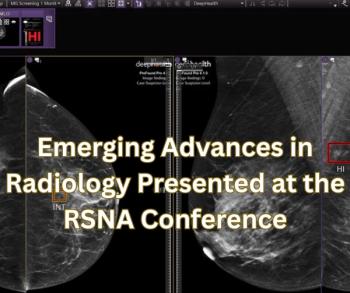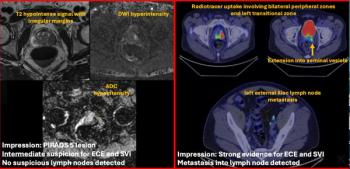
Comparison Mammograms Work, But with a Catch
Past mammograms are a valuable tool for benchmarking for change, but radiologists should keep in mind the diagnostic risks with respect to screenings where change is and isn’t observed.
Past mammograms are a valuable tool for benchmarking for change, but radiologists should keep in mind the diagnostic risks with respect to screenings where change is and isn’t observed.
That’s the conclusion of
A team led by Bonnie C. Yankaskas, PhD, of the University of North Carolina School of Medicine, looked at 1,157,980 screening mammograms from 435,183 women ages 40 and up, taken from 1994 and 2008. The scans came from community practices in a wide variety of settings and among a diverse population of women and radiologists. Radiologists recorded the presence of comparison mammograms and whether there had been a visible change between the old and new
Yankaskas and colleagues measured
In screenings with comparison mammograms, the team found 3.7 cancers per 1,000 women, versus 7.1 per 1,000 in screenings without comparison mammograms. Why? The 6.9 percent of women in the study without comparison mammograms tended to be younger - and doing their first mammograms - which led to a higher detection rate, the authors said.
Comparison mammograms were available in 93 percent of examinations. For screening with comparison mammograms versus screening without comparison mammograms,
• Recall rate was 6.9 percent versus 14.9 percent;
• Sensitivity was 78.9 percent versus 87.4 percent; and
• Specificity was 93.5 percent versus 85.7 percent.
For screening with comparison mammograms that showed a change versus screening with comparison mammograms showing no change, the numbers were different:
• Recall rate was 41.4 percent versus 2 percent
• Sensitivity was 96.6 percent versus 43.5 percent; and
• Specificity was 60.4 percent versus 98.1 percent.
For this cohort, the cancer detection rate per 1,000 women was 25.4 in those with comparison mammograms showing change; in those showing no change, it was 0.8 percent. The cancers detected in both cases were ductal carcinoma in situ (roughly 20 percent of cases) and invasive carcinoma (roughly 80 percent of cases).
The authors concluded that using comparison mammograms is helpful, but conclusions should be assessed in terms of whether change is noted. When change is obvious, the false positive rate is high, and demands attention to those recommended for further work-up to reduce the high rate of false-positive findings. The reverse is true when no change is noted, which wins high specificity at the expense of low sensitivity. A large proportion of cancers are missed in this subgroup.
Newsletter
Stay at the forefront of radiology with the Diagnostic Imaging newsletter, delivering the latest news, clinical insights, and imaging advancements for today’s radiologists.




























